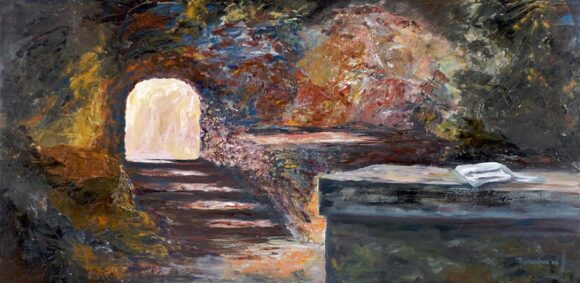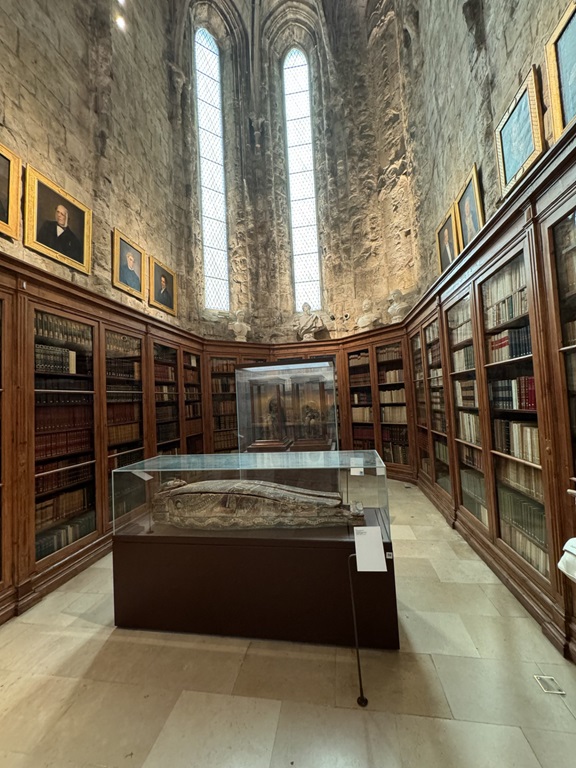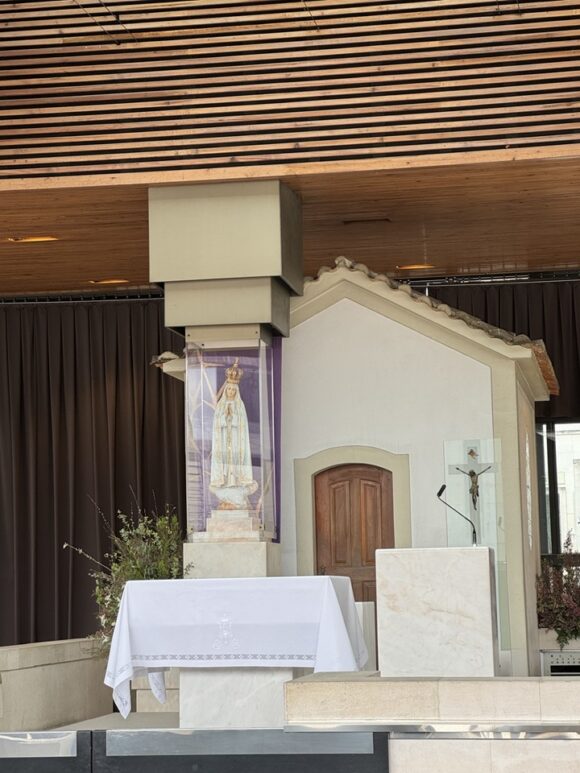He is risen!
 The Empty Tomb is a painting by George Richardson (2011)
The Empty Tomb is a painting by George Richardson (2011)

The New York Times has a featured article this morning examining the chronic rise of student absenteeism across the country since the return to in-person instruction after COVID. In the four years since the pandemic closed schools, U.S. education has struggled to recover on a number of fronts, from learning loss, to enrollment, to student behavior.
But perhaps no issue has been as stubborn and pervasive as a sharp increase in student absenteeism, a problem that cuts across demographics and has continued long after schools reopened.
Nationally, an estimated 26 percent of public school students were considered chronically absent last school year, up from 15 percent before the pandemic, according to the most recent data, from 40 states and Washington, D.C., compiled by the conservative-leaning American Enterprise Institute. Chronic absence is typically defined as missing at least 10 percent of the school year, or about 18 days, for any reason.
The increases have occurred in districts big and small, and across income and race. For districts in wealthier areas, chronic absenteeism rates have about doubled, to 19 percent in the 2022-23 school year from 10 percent before the pandemic, a New York Times analysis of the data found.
Furthermore, the trend suggests that something fundamental has shifted in American childhood and the culture of school, in ways that may be long lasting. What was once a deeply ingrained habit — wake up, catch the bus, report to class — is now something far more tenuous.
“Our relationship with school became optional,” said Katie Rosanbalm, a psychologist and associate research professor with the Center for Child and Family Policy at Duke University.
The habit of daily attendance — and many families’ trust — was severed when schools shuttered in spring 2020. Even after schools reopened, things hardly snapped back to normal. Districts offered remote options, required Covid-19 quarantines and relaxed policies around attendance and grading.
The entire article is important reading.
COVID just keeps giving!
Tony
Dear Commons Community,
OpenAI announced yesterday that a small group of businesses was testing a new A.I. software system, Voice Engine, that can recreate a person’s voice from a 15-second recording. If you upload a recording of yourself and a paragraph of text, it can read the text using a synthetic voice that sounds like yours.
The text does not have to be in your native language. If you are an English speaker, for example, it can recreate your voice in Spanish, French, Chinese or many other languages.
OpenAI is not sharing the technology widely yet because it is still trying to understand its potential dangers. Like image and video generators, a voice generator could help spread disinformation across social media. It could also allow criminals to impersonate people online or during phone calls.
The company said it was particularly worried that this kind of technology could be used to break voice authenticators that control access to online banking accounts and other personal applications. You can listen to samples of Voice Engine at in an article in The New York Times.
“This is a sensitive thing, and it is important to get it right,” an OpenAI product manager, Jeff Harris, said in an interview.
The company is exploring ways of watermarking synthetic voices or adding controls that prevent people from using the technology with the voices of politicians or other prominent figures.
Last month, OpenAI took a similar approach when it unveiled its video generator, Sora. It showed off the technology but did not publicly release it.
OpenAI is among the many companies that have developed a new breed of A.I. technology that can quickly and easily generate synthetic voices. They include tech giants like Google as well as start-ups like the New York-based ElevenLabs. (The New York Times has sued OpenAI and its partner, Microsoft, on claims of copyright infringement involving artificial intelligence systems that generate text.)
Businesses can use these technologies to generate audiobooks, give voice to online chatbots or even build an automated radio station DJ. Since last year, OpenAI has used its technology to power a version of ChatGPT that speaks. And it has long offered businesses an array of voices that can be used for similar applications. All of them were built from clips provided by voice actors.
But the company has not yet offered a public tool that would allow individuals and businesses to recreate voices from a short clip as Voice Engine does. The ability to recreate any voice in this way, Mr. Harris said, is what makes the technology dangerous. The technology could be particularly dangerous in an election year, he said.
In January, New Hampshire residents received robocall messages that dissuaded them from voting in the state primary in a voice that was most likely artificially generated to sound like President Biden. The Federal Communications Commission later outlawed such calls.
Mr. Harris said OpenAI had no immediate plans to make money from the technology. He said the tool could be particularly useful to people who lost their voices through illness or accident.
He demonstrated how the technology had been used to recreate a woman’s voice after brain cancer damaged it. She could now speak, he said, after providing a brief recording of a presentation she had once made as a high schooler.
Below is a twenty-minute video providing further details.
Tony
Dear Commons Community,
Elaine and I spent 13 hours yesterday traveling from our hotel in Lisbon back to our home in North Salem. Tiring trip especially the four passport checks at Lisbon Airport but we understand it is for our safety. On the plane, we recapped our vacation and here are some of our thoughts.
The Alma Lusa Hotel was perfect for us. Located near the River Tejo, it has a most cordial and accommodating staff. The room was spacious, airy, and overlooked the Praça do Município. The Delfina Restaurant that is part of the hotel had good food and its outdoor patio is an excellent place to have an after-dinner nightcap. Dinners in all the restaurants were excellent especially if you enjoy fresh fish. The outdoor café at Squisito on the Praça do Comércio was our favorite place to have a glass of wine in the afternoon with a plate of fresh bread and cured olives.
Every day we went someplace either in Lisbon or some other town in Portugal. Our favorites in Lisbon were the Carmo Archeologic Museum, the Church of St. Anthony of Lisbon, and Palm Sunday services at the Church of St. Mary Magdalene. We enjoyed our evening and daytime walks on the small streets that emanate from The Arch on the Praça do Comércio. Each of the towns outside of Lisbon were exciting and interesting. Sintra (National Palace), Obidos, Fatima and especially the site of the Battle of Aljubarrota in Batalha. Learning the background and life of the hero of this battle, General Nuno Álvares Pereira, left an impression.
We also enjoyed conversations with people whether hotel staff, waiters, or tour guides, who were friendly and attentive to us and all our questions. The people smile a lot and are proud of Portugal to which they refer as a small European country that has made significant contributions to Western culture. Its contributions to architecture, especially the combinations of Gothic, Manueline, and Moorish styles are grand to say the least. We tended to stay away from discussions about the era of American exploration, the settlements in Brazil and the slave trade.
In sum, we highly recommend a visit to Lisbon and Portugal.
Bravo and brava!
Tony
 A room under the Church of St. Anthony of Lisbon depicting the site of St. Anthony’s birth
A room under the Church of St. Anthony of Lisbon depicting the site of St. Anthony’s birth
 Statue of General Nuno Álvares Pereirathe at the site of the Battle of Aljubarrota in Batalha
Statue of General Nuno Álvares Pereirathe at the site of the Battle of Aljubarrota in Batalha
Dear Commons Community,
This was our last day in Lisbon. It has been a fine vacation. Unfortunately, it rained most of the day but we can’t complain since we have had wonderful weather for the entire trip.
I decided to take a walk in between rain drops this afternoon to a couple of nearby places.
Tomorrow is a travel day!
Tony
 Cross atop the Sanctuary of Christ the King on the Tejo River
Cross atop the Sanctuary of Christ the King on the Tejo River
 Rua do Comercio – Our Hotel is at the End of This Street
Rua do Comercio – Our Hotel is at the End of This Street
Carmo Convent
Dear Commons Community,
Elaine and I visited Carmo Convent yesterday. Situated in Lisbon, Carmo is the Gothic ruins of a Catholic convent that was destroyed in the earthquake of 1755 and that now functions as an archaeological museum. The Convent was founded by Nunez Alvares Pereira, the general who led the Portuguese army in the Battle of Aljubarrota, which was fought between the Kingdom of Portugal and the Crown of Castile in 1385. After his wife’s death in 1423, Pereira donated most of his wealth to the convent and became a monk. Pereiera originally was buried here. Unfortunately, his coffin was lost.
There were several attempts to rebuild Carmo but all were eventually abandoned. Two wealthy Lisboans funded the conversion of the remains into the impressive archeological museum we see today. The roof was never rebuilt. Today, Carmo contains a variety of relics and artifacts including several well-preserved South American mummies.
Small interesting museum.
Tony
 Sculpture of São João Nepomuceno
Sculpture of São João Nepomuceno
 The Board Room and Library with South American Mummies on Display
The Board Room and Library with South American Mummies on Display
 A replica of the coffin of Nunez Alvares Pereira
A replica of the coffin of Nunez Alvares Pereira
 Shrine of Our Lady of Fátima with the Basilica of Our Lady of the Rosary
Shrine of Our Lady of Fátima with the Basilica of Our Lady of the Rosary
Dear Commons Community,
Fátima is a Portuguese city located 125 kilometers due east of Lisbon. Its worldwide fame is due to the phenomenon of the apparitions of the Virgin Mary reported by three shepherd children from May 13th to October 13th, 1917.
 Lúcia dos Santos, (nine-years old), and her cousins Francisco Marto, and Jacinta Marto
Lúcia dos Santos, (nine-years old), and her cousins Francisco Marto, and Jacinta Marto
In 1917, the three children (Lúcia dos Santos, (ten-years old), and her cousins Francisco Marto, and Jacinta Marto (eight and six-years old respectively) claimed to have witnessed six apparitions of Our Lady on May 13th, June 13th, July 13th, September 13th and October 13th in the place of Cova da Iria , with one apparition taking place on August 19th. The apparition of the Virgin Mary asked them to pray the rosary every day, for the conversion of sinners , and to do penance . She also asked to have a chapel built in her honor.
The Sanctuary or Shrine of Our Lady of Fátima, located where the apparitions occurred, has become one of the most important international destinations for religious devotion, receiving approximately six million people per year. There several structures enclosed by a very large plaza or square.
After Fatima, we stopped at Nazaré for lunch, a small seacoast fishing town, with a spectacular beach and harbor. Certain times of the year, waves on its beaches are measured as high as 100 feet.
Very interesting.
Tony
 Actual site of the apparitions
Actual site of the apparitions
 Tombs of Lucia and Juanita in the Basilica of Our Lady of the Rosary
Tombs of Lucia and Juanita in the Basilica of Our Lady of the Rosary
 Monastery of Batalha also known as the Monastery of Saint Mary of the Victory
Monastery of Batalha also known as the Monastery of Saint Mary of the Victory
Dear Commons Community,
Yesterday, Elaine and I visited the site of the Battle of Aljubarrota which was fought between the Kingdom of Portugal and the Crown of Castile on 14 August 1385. Forces commanded by General Nuno Álvares Pereira, with the support of English allies, opposed the army of the King of Castile which included Aragonese and French allies, as well as Genoese mercenaries. The result was a decisive victory for the Portuguese, ruling out Castilian ambitions to the Portuguese throne, ending the 1383–85 crisis and assuring Portugal’s independence from Castile the establishment of John I as King of Portugal.
On the site is a magnificent statue of General Pereira astride his horse. Later in life, he became a monk and was beatified by Pope Benedict XV in 1918, and canonized by Pope Benedict XVI in 2009.
Also on the site of the battle is the Monastery of Batalha also known as the Monastery of Saint Mary of the Victory. It is one of the best and original examples of Late Flamboyant Gothic architecture in Portugal, intermingled with the Manueline style.
A very important historical area for the Portuguese people.
Tony
 Statue of Nuno Álvares Pereira
Statue of Nuno Álvares Pereira
 Monastery of Batalha Looking at the Main Altar from the Rear of the Church
Monastery of Batalha Looking at the Main Altar from the Rear of the Church
 Monastery of Batalha Side Chapel
Monastery of Batalha Side Chapel
Dear Commons Community,
Yesterday, we visited Obidos, a small town on the Atlantic Coast of Portugal. The name “Óbidos” is a Latinized derivation of the older Celtic “Eburobricio”. It has an extensive history starting as a Roman settlement near the foothills of an elevated escarpment. The region of Óbidos, extending from the Atlantic to the interior of Estremadura Province along the rivers and lakes has been inhabited since the late Paleolithic. Archeological evidence from the base of the medieval tower at Óbidos Castle indicates Roman construction linked to an outpost in Eburobrittium, a large urban area that has been under excavation.
After the fall of Rome, the region came under the influence of the Visigoths, although specific records are missing. The Roman town of Eburobrittium was abandoned in the 5th century for the more secure hilltop where today the principal settlement is located. Sometime after 713 the Moors established a fortification on this mountain, while a Christian community of Mozarabs lived in the Moncharro neighbourhood.
The city was taken from the Moors during the reign of the first King of Portugal, Afonso Henriques, in 1148.
The castle and walls of Óbidos were remodelled during the reign of King Dinis I. The limestone and marble structure was strengthened and elaborated, while the keep was created in the 14th century, by King Fernando. By the time of the first remodelling project, the settlement had also grown beyond the gates of the castle.
Today quaint small lanes that preserve its medieval past wind their way to the castle with chapels, bookstores, restaurants, and small stores selling mostly tourist-related goods.
Tony
Dear Commons Commu9nity,
The Church of Mary Magdalene is located in Alfama, the old town of Lisbon. The original church was erected in 1150, by order of King Afonso Henriques. In 1363, a fire completely destroyed the church, and Ferdinand I of Portugal had it rebuilt. In 1755 the church was demolished by the 1755 Lisbon earthquake. In 1783 Queen Maria I of Portugal rebuilt the church again.
The Late Renaissance-inspired façade includes a Manueline (Portuguese Gothic) portal from the 1500s that survived the earthquake, while inside it features a painted ceiling and images by Machado de Castro, Portugal’s leading 18th-century sculptor.
It is one of the few churches in Lisbon that offers mass in a number of different languages, from Tagalog to Umbundu and Kimbundu. We specifically came for Palm Sunday because the Mass would be said in English.
It was quite an impressive service. Lots of singing and energetic prayer responses from a diverse congregation of churchgoers. Eight parishioners actively were involved in the reading of the Gospel. Elaine felt it was one of the most moving services she has ever attended.
Tomorrow, we will be taking a full-day tour to Fátima, Nazaré, and Óbidos.
Tony
 Church of Mary Magdalene as Seen from the Balcony
Church of Mary Magdalene as Seen from the Balcony
 Church of Mary Magdalene Side Wall
Church of Mary Magdalene Side Wall